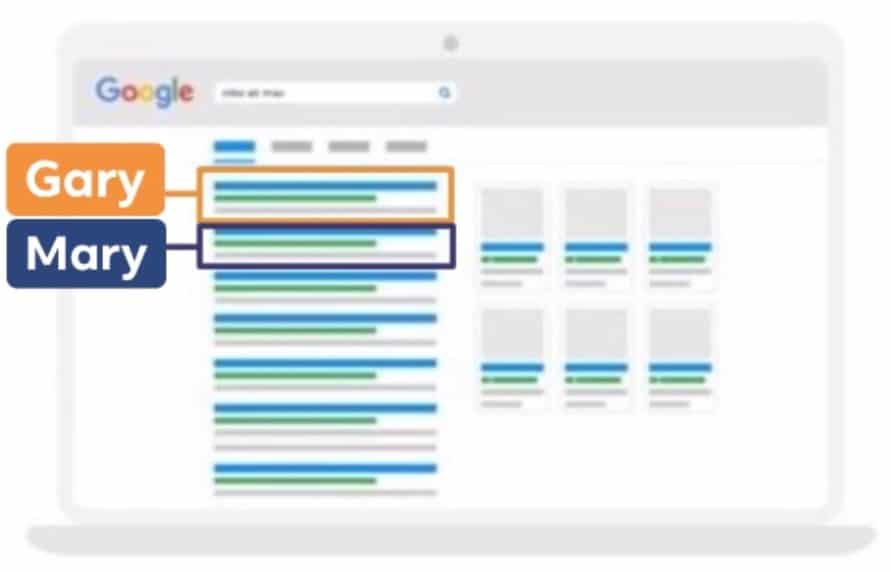“Going once. Going twice. Sold!”
Did you know that Google receives more than 63,000 searches per second and that every time a user searches, there’s a behind-the-scenes auction taking place? The Google Ads auction is much like a real-life auction; however, the advertiser with the highest bid isn’t necessarily the winner.
Google Ads sets bid prices in the ad auction using max bids and ad rank. Totally confused? Keep reading and I will clear it up for you.
Max Bids
With more businesses advertising online and more people shopping from their computers and mobile devices, the Google Ads auction is more competitive than ever. For the most part, every keyword you want to bid on is already saturated. For your ads to show, you’ll need to be competitive with your bids. The bid you set in Google Ads is the maximum amount you’re willing to pay for a click on your ad*. Google calls this the maximum cost-per-click (max CPC) bid or just max bid for short.
To determine your max CPC bid, use the Google Keyword Planner to get historical metrics like a keyword’s top-of-page bid, impressions, and average monthly searches.
*One caveat about your max bid. If you are using the Smart Bidding option enhanced CPC, your actual CPC can be higher than your max CPC bid. The reason is that Google can increase your bid based on how confident it is that the person searching will convert. Google can also do the opposite and lower the bid if they have low confidence.
Once your bid is set for a keyword, you’re eligible to participate in the Google Ads auctions that are triggered every time a user searches that keyword.
Google looks at all the real-time, auction-specific calculations and decides which ads will show. If your ad is clicked, then the amount you pay is called the actual CPC. This is usually less than your max bid because you only pay what’s minimally required to beat the Ad Rank of the competing ad immediately below you. If there are no competitors below you then you pay the reserve price.
Ad Rank
The reserve price is also known as the ad rank threshold. This is the minimum bid amount required for your ads to show. If your bid is lower than the threshold, your ads won’t show at all. Your ads may also not show if your ad rank is too low.
Ad rank determines the position of an ad. The higher your ad rank, the less you pay for a more prominent ad position. Most often, the ad with the highest ad rank will show in the top position, followed by the ad with the second-highest ad rank, and so on.
Your ad rank is calculated using real-time, auction-specific calculations of various factors including expected clickthrough rate, ad relevance, landing page experience, location, and more.
For more on ad rank, see “How to Improve Ad Rank without Raising Bids.”
Max CPC bid and ad rank work together to determine which ad wins the absolute top-ranking position.
For example, if Mary sets a bid price of $2 and has an ad rank of 20, while Gary sets a bid price of $1.25 with an ad rank of 80, then the absolute top ad position would go to Gary because his ad rank is higher.

In the example above, we used a theoretical ad rank of 20 and 80 for Mary and Gary, respectively, but the example is purely hypothetical. Google does not divulge an ad rank score.
The Google Ads auction is constantly updating to ensure they are providing users the most relevant search results. To keep your bid prices low and your ad position high, your entire user experience must be relevant and responsive. Otherwise, you run the risk that Google won’t allow your ads to show at all.
Regularly monitoring your bids and adjusting them as needed will help you to stay on top of the ever-changing Google Ads auction. The auction is continually changing, due to competition changing its bids and Google using automated bidding strategies. The good news is that bids are easily adjustable. You don’t need to get too hung up on your initial bid price, though, because you’ll be adjusting it to optimize your campaign performance over time, based on results within your account.



